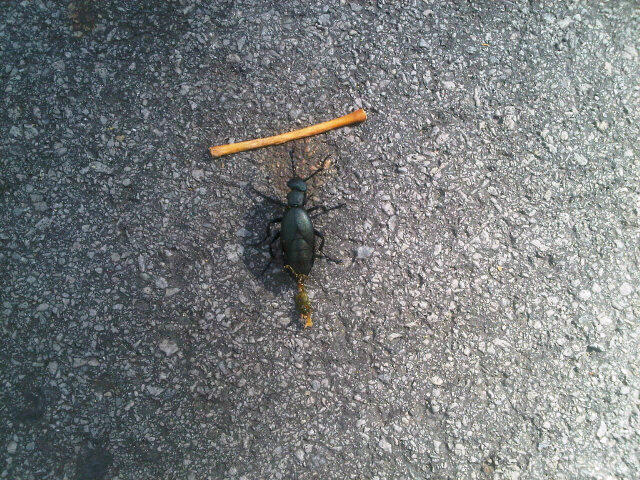
This is the blister beetle, specifically of the Genus Meloe. It was hard to identify and at times i believed it to be a large blue ant but I knew that couldn't be true. Blister beetles, also called oil beetles, earned their name by the fact that they defend themselves by producing an oily, toxic substance called cantharidin. This substance remains stable even after the beetles are killed. It produces blisters on the skin if handled, and if ingested it causes inflammation of the stomach lining, small intestine and urinary tract. I believe that the yellow substance behind the beetle is the previously mentioned defensive mechanism, although it was present when I found it originally so I didn't see it come to form. One of the easiest to identify it is the fact that the wing tips do not cover the whole lower back and the abdominal sections are clearly visible. Female members of the species will have a severely swollen abdomen when pregnant.
How did you identify it?
ReplyDeleteBeth